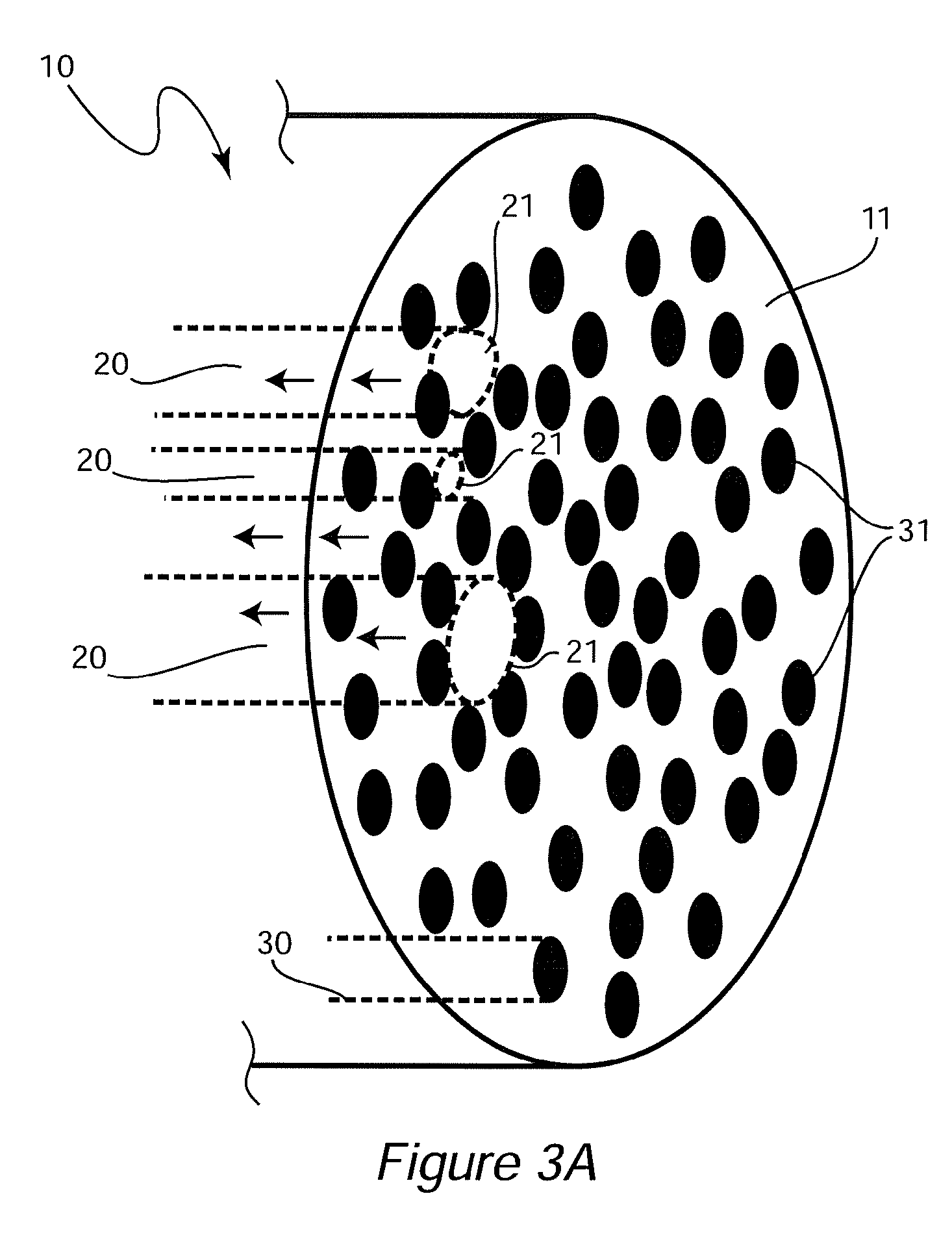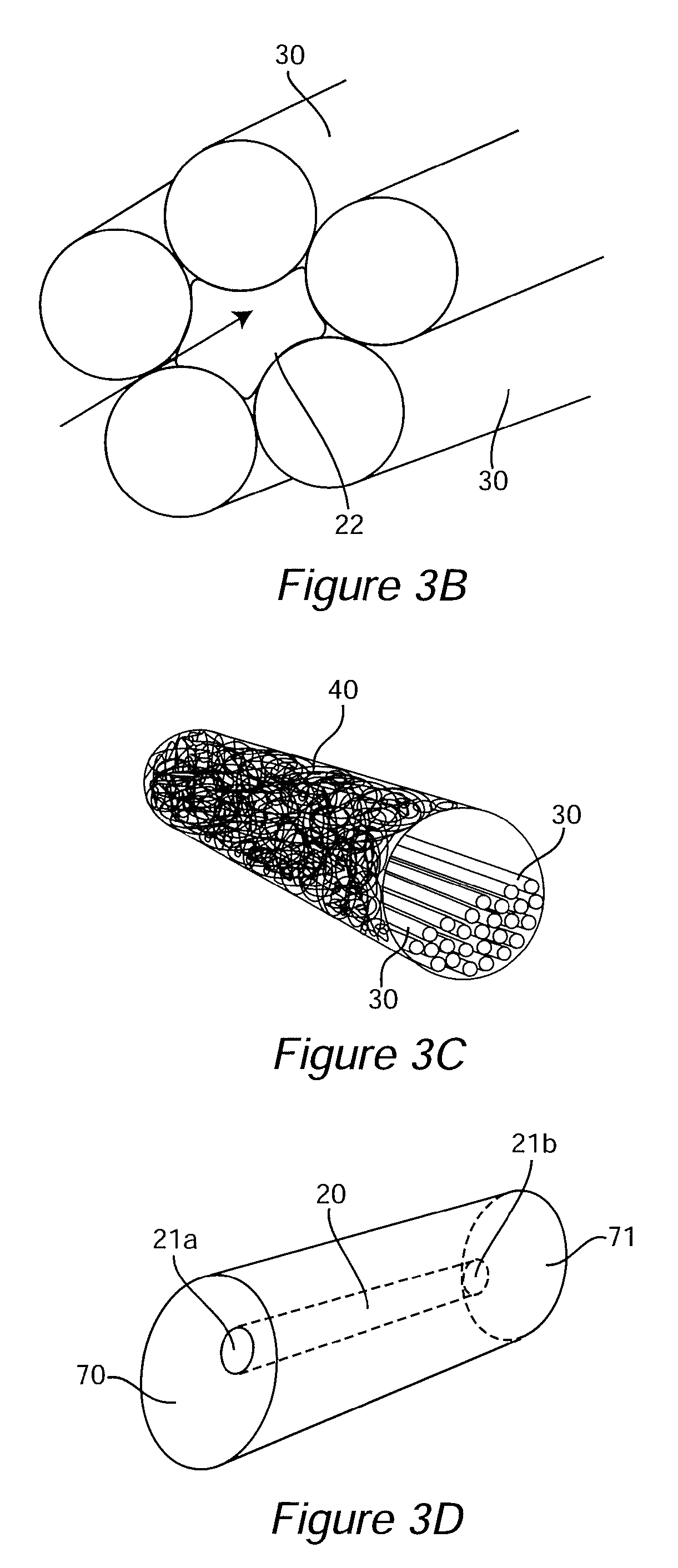Electrospun nerve guides for nerve regeneration designed to modulate nerve architecture
a nerve architecture and nerve guide technology, applied in the field of nerve guide, can solve the problems of reducing the efficiency and fidelity of axon targeting, affecting the function of the nerve guide, and affecting the regeneration process, so as to achieve the effect of functional recovery and functional recovery
- Summary
- Abstract
- Description
- Claims
- Application Information
AI Technical Summary
Benefits of technology
Problems solved by technology
Method used
Image
Examples
example 1
[0097]An ideal nerve guide configuration would closely mimic the structure of an autologous nerve graft. This idealized guide would display a cylindrical shape and be composed of dense three dimensional (3D) arrays of highly aligned electrospun fibers that were oriented in parallel with the long axis of the construct. Gaps and elongated spaces between the stacked fiber arrays would provide thousands of channels for directed axonal growth. This type of configuration can be approximated by rolling a 2D sheet of aligned fibers into a cylinder. Unfortunately, rolling a 2D sheet will result in a seam in the construct that could provide an avenue for the infiltration and penetration of inflammatory and interstitial cells into the construct. The seam could also represent a nexus for mechanical failure. Air gap electrospinning makes it possible to circumvent these limitations and produce cylindrical, seamless, and truly, 3D constructs composed of aligned arrays of electrospun fibers that ar...
example 2
Gradients of Therapeutic Substance
[0143]In human nerve injuries, where a segment of tissue has been injured to the point where a nerve guide must be used to re-establish continuity of the injured tissue (or otherwise direct the regeneration process) the actual physical dimensions of the nerve segment that has to be reconstructed may be relatively nominal in length. However, even the loss of a relatively short segment of tissue can represent a nearly insurmountable barrier to regeneration. There is considerable evidence that growth factor gradients established by various cells that migrate into the injury site play a critical role in directing the nerve regeneration process. Clearly, in circumstances where a nerve guide is used to reconstruct damaged tissue the regeneration process could be enhanced, and accelerated, if a specific growth factor gradient could be directly incorporated into a nerve guide prior to reconstructive surgery. However, recapitulating a growth factor gradient ...
example 3
Dissolution Dependent Gradients
[0146]As described above, the second type of gradient, the, Dissolution Dependent Gradient (DDG) is fabricated by varying the concentration of carrier (e.g. alginate) along the length of the thread like construct. This type of gradient can be fabricated using a constant concentration of therapeutic reagent or a variable concentration of therapeutic reagent. The basis for this type of gradient lies in the observation that alginate threads composed of low concentrations of this carbohydrate dissolve faster than alginate threads composed of higher concentrations of this carbohydrate. Thus, the rate of release of an active agent incorporated into the thread can be controlled by placing the agent within a segment of the gradient thread that will dissolve at or within a desired time frame, e.g. a first segment of the thread may dissolve over a period of days (e.g. 1-7 days), a second segment may dissolve over a period of e.g. 1-2 weeks, a third segment may d...
PUM
| Property | Measurement | Unit |
|---|---|---|
| total length | aaaaa | aaaaa |
| length | aaaaa | aaaaa |
| length | aaaaa | aaaaa |
Abstract
Description
Claims
Application Information
 Login to View More
Login to View More - R&D
- Intellectual Property
- Life Sciences
- Materials
- Tech Scout
- Unparalleled Data Quality
- Higher Quality Content
- 60% Fewer Hallucinations
Browse by: Latest US Patents, China's latest patents, Technical Efficacy Thesaurus, Application Domain, Technology Topic, Popular Technical Reports.
© 2025 PatSnap. All rights reserved.Legal|Privacy policy|Modern Slavery Act Transparency Statement|Sitemap|About US| Contact US: help@patsnap.com



